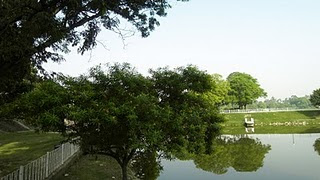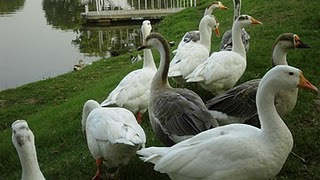Lahore is perhaps the only city in the sub continent that has the richest heritage of Mogul architecture that includes the Badshahi Mosque, Lahore Fort, Shalamar Bagh and tombs of Mogul royalties. Outside Lahore, there is yet another place which abounds in Mogul taste in architecture. Shahdara, once a place of royalties, located on the right bank of the Ravi River just on the outskirts of Lahore today lies in obscurity. In the Mughal ear, Shahdara was a halting place for the Mughals crossing the Ravi along the road from Lahore towards Kashmir, Kabul, and as stepping staging camp for hunting in near town of Sheikhupura. Many visitors who come to Lahore, usually skip this place to visit and thus lose an opportunity to see some of the great Mughal artwork and architecture. Here lie buried Jahangir (Akbar's son and Shah Jahan's father) Noor Jehan (Jahangir's beloved wife) and Asaf Jah (Noor Jahan's brother).

Jahangir's second Persian wife Noor-un-nisa, commonly known as Noor Jehan had a knack of selecting places for development as gardens and other royal abodes. She got a beautiful garden laid at Shahdara, which was known as "Dilkusha Garden" - a garden that pleased the hearts. When Jahangir died in 1625, his younger son Shah Jahan built Jahangir's tomb on the site of "Dilkusha Garden" which was completed in 1637 and cost Rs 1 million, the same way he later built Taj Mahal for his wife Mumtaz Mahal. The walled tomb-garden is entered from the Akbari serai on the west side. The entrance to the tomb has extensive architectural element with niches, done up in red sandstone. The entire layout is symmetrical, set amidst a "Chahar Bagh" - four garden. The tomb itself is located at the centre of the building. At the centre of an approximately 600 square yards garden lies the tomb building also made of red sandstone and inlaid with marble. The tomb has been constructed on a high platform and has four tall minarets on its corners.
The single-storey square structure measures 267 feet on each side and built in red sandstone inlaid with marble motifs. It is surrounded by a 58.77-acre garden divided into sixteen sub-quarters separated by walkways and water channels. The tomb features rich fresco paintings and mosaic tiles. The idea of white marble motifs incised in red sandstone such as ewer, fruit dishes and rosewater sprinkler appears to have been taken from Persian miniature paintings. Jahangir's Tomb is far more modest than either his father's or grandfather's garden tomb and larger but less ornate than Itimad-ud-Daulah's Tomb (his father-in-law), and is of a style that was never repeated. Jahangir's grave is decorated with a vegetal pietra dura design. On the roof platform of the tomb is the marble cenotaph of Jahangir beautifully inlaid in black with the ninety-nine glorious names of God. The cenotaph was once surrounded by beautiful marble screen believed to have been robbed in later centuries to decorate the Golden Temple in Amritsar. Besides a list of his official and unofficial titles are also inscribed which read, " "The illuminated resting place of His Majesty, the asylum of pardon, Nur-al-Din Muhammad Jahangir Badshah, A.H. 1037 (corresponding to 1627 A.D.)."
The tomb chamber is sat at the centre of the building, through a passageway of painted walls and mosaic marble floors. The tomb has been placed in accordance with the emperor's wish to be buried under the canopy of the sky and stars like that of his great-grandfather Babur. The tomb has lush green patches of grass (though now utterly neglected) - a fact Noor Jahan kept in her mind while building the tomb since Jahangir loved birds and flowers. Wandering around these once beautiful gardens, one may imagine once these would have been filled with flowering trees and plants, the songs of birds, and fluttering butterflies.








































